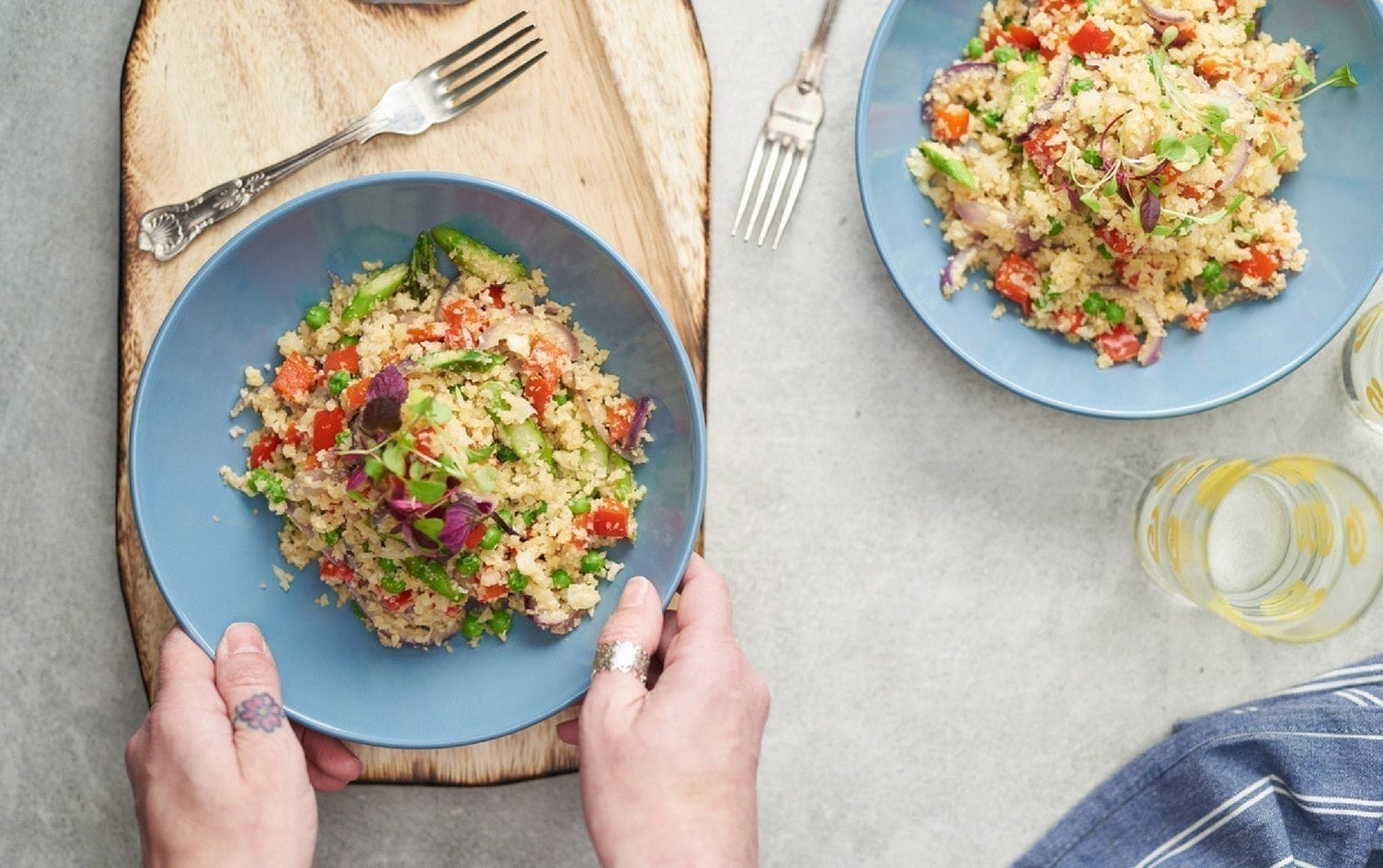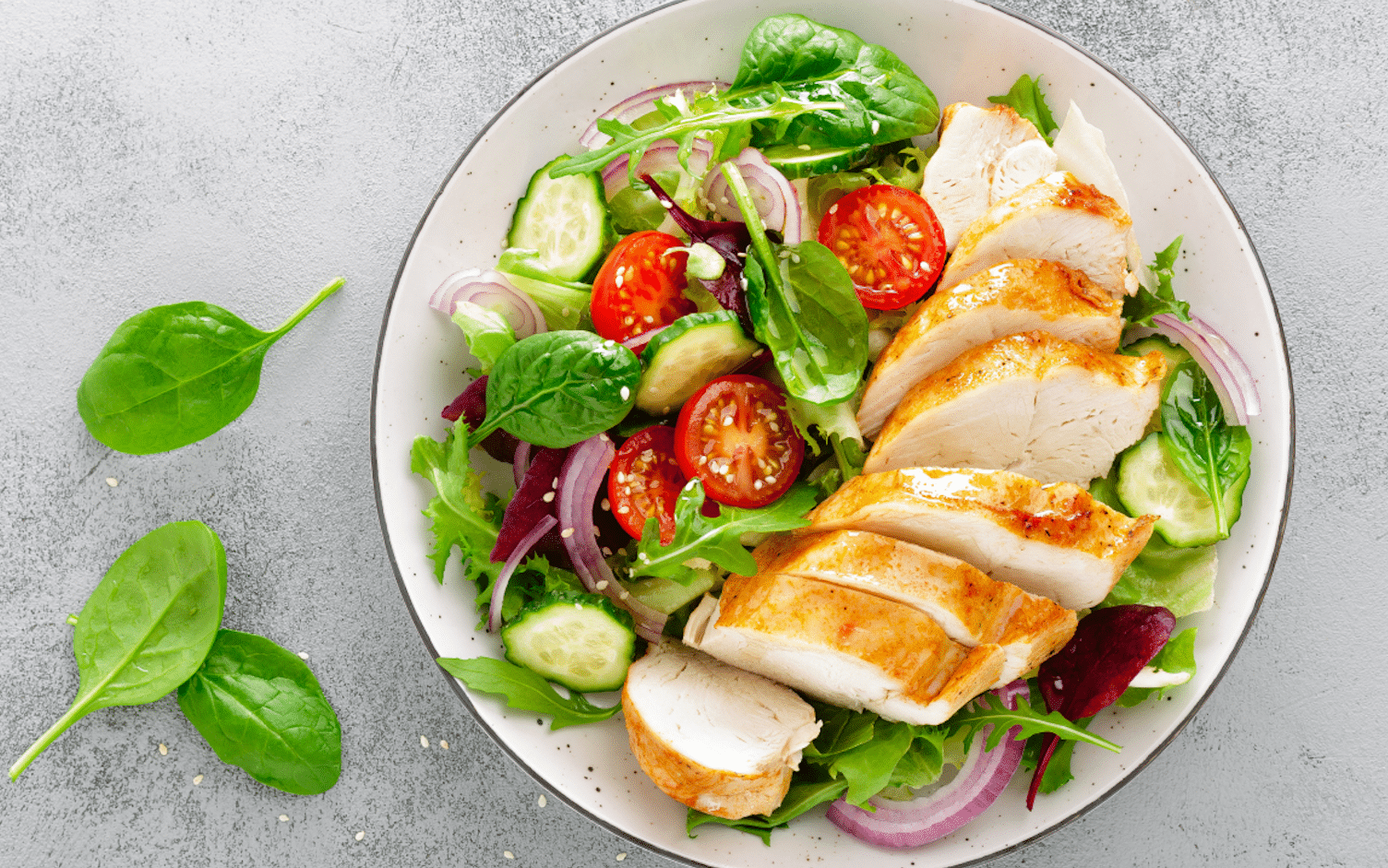“Cutting calories” is one of the more nefarious-sounding phrases in the English language, one that might conjure images of boring salads and induce hunger pangs. But the truth is, there are plenty of easy ways to reduce your calories without making grueling sacrifices — and the efforts can really add up.
In general, 3,500 calories equals about one pound of fat, so if you reduce your calorie intake, you can drop some weight — to the tune of 10 pounds per year, if you cut just 100 calories per day.
Of course, everyone’s calorie needs are different, and vary by weight, age and activity level. So keep that in mind before diving in head-first. Below, we look at how seven little tweaks can have a significant impact over the course of a year.
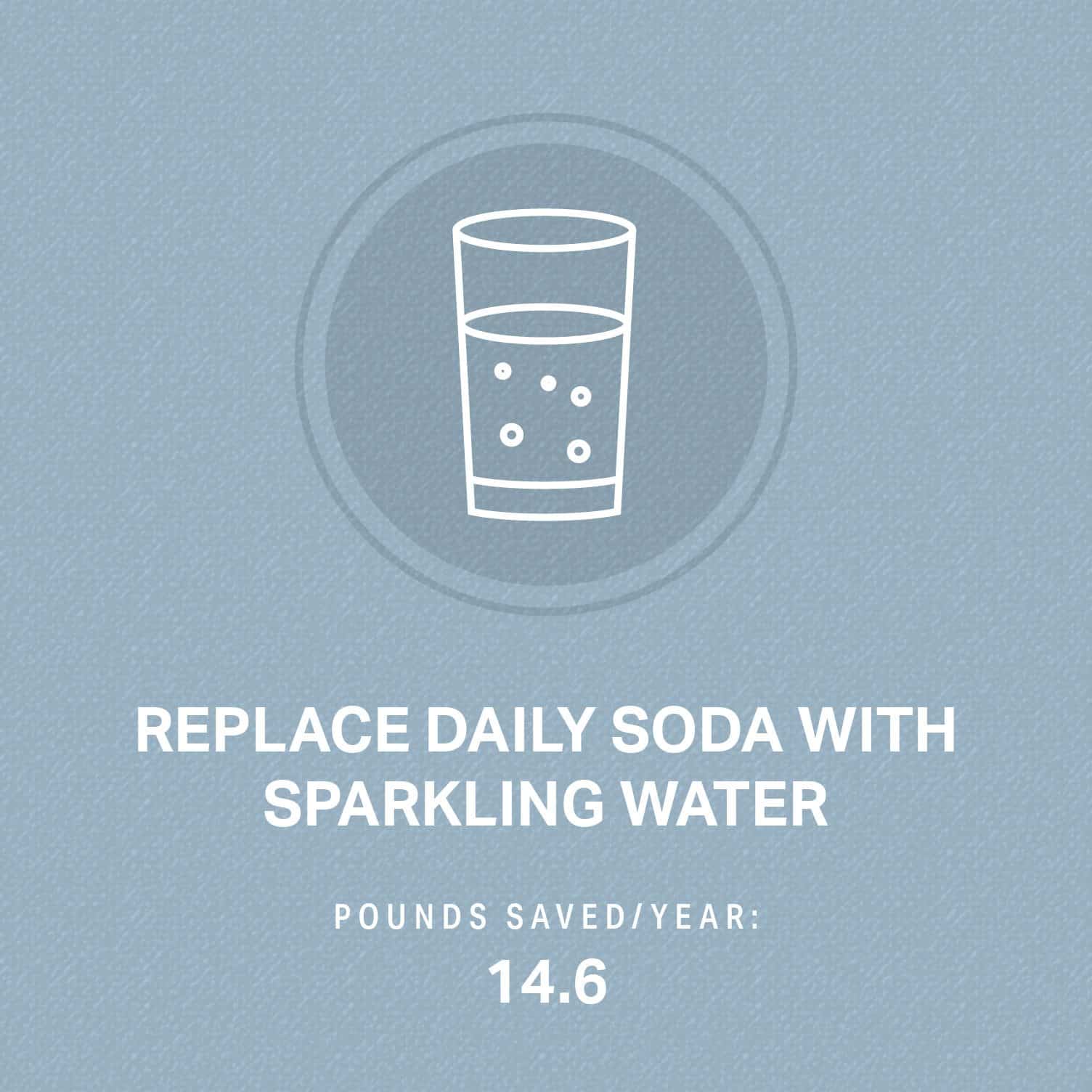
The average soda contains about 140 empty calories — and a scary amount of sugar. So 140 calories, 365 days a year adds up to 51,100 calories or almost 15 pounds.
Exchange your daily afternoon soda for some refreshing sparkling water, and you’ll be doing yourself a serious favor.
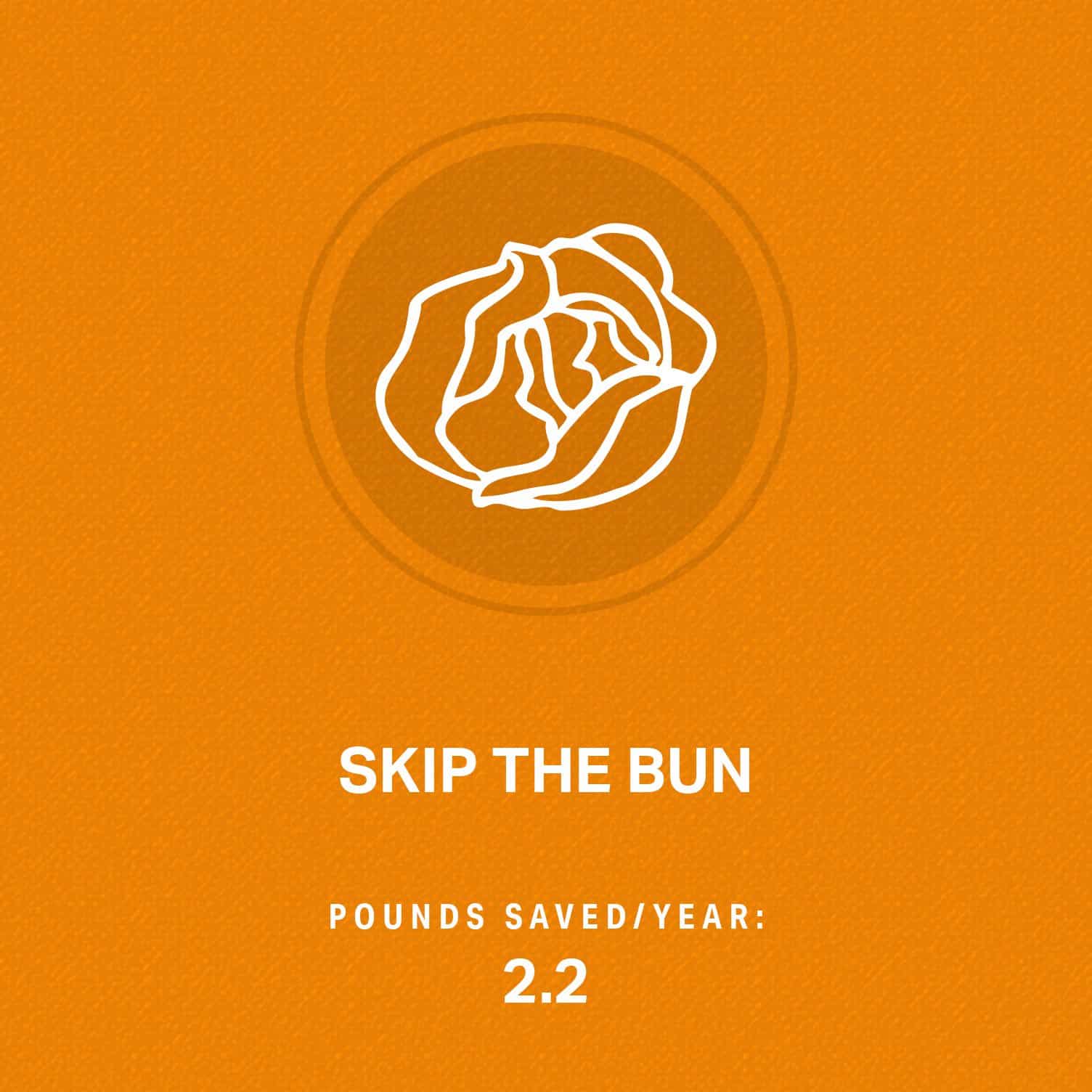
The average American eats three hamburgers per week, which is a lot of burgers. And, more often than not, they’re of the fast-food rather than home-cooked variety. The one positive takeaway: There’s plenty of room to improve. Going bun-less once per week saves about 150 calories, which adds up to 7,800 calories a year — just over 2 pounds.
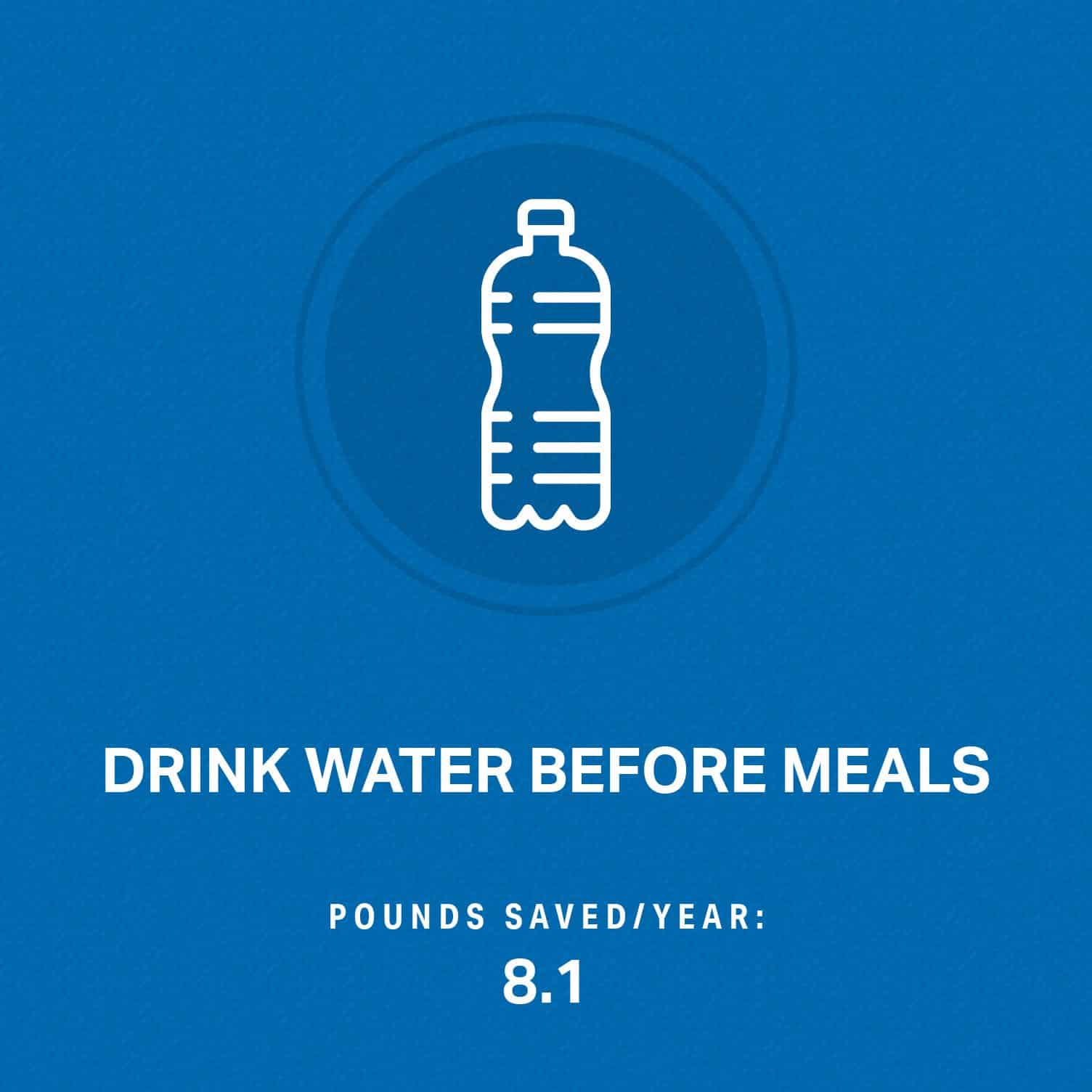
Drinking water can help curb your appetite and prevent overeating. In fact, one study found drinking two cups of water (16 ounces) before a meal resulted in a 13% reduction in calorie intake. If you typically eat a 600-calorie dinner, drinking water beforehand could save you 78 calories per day — or 28,470 calories per year.
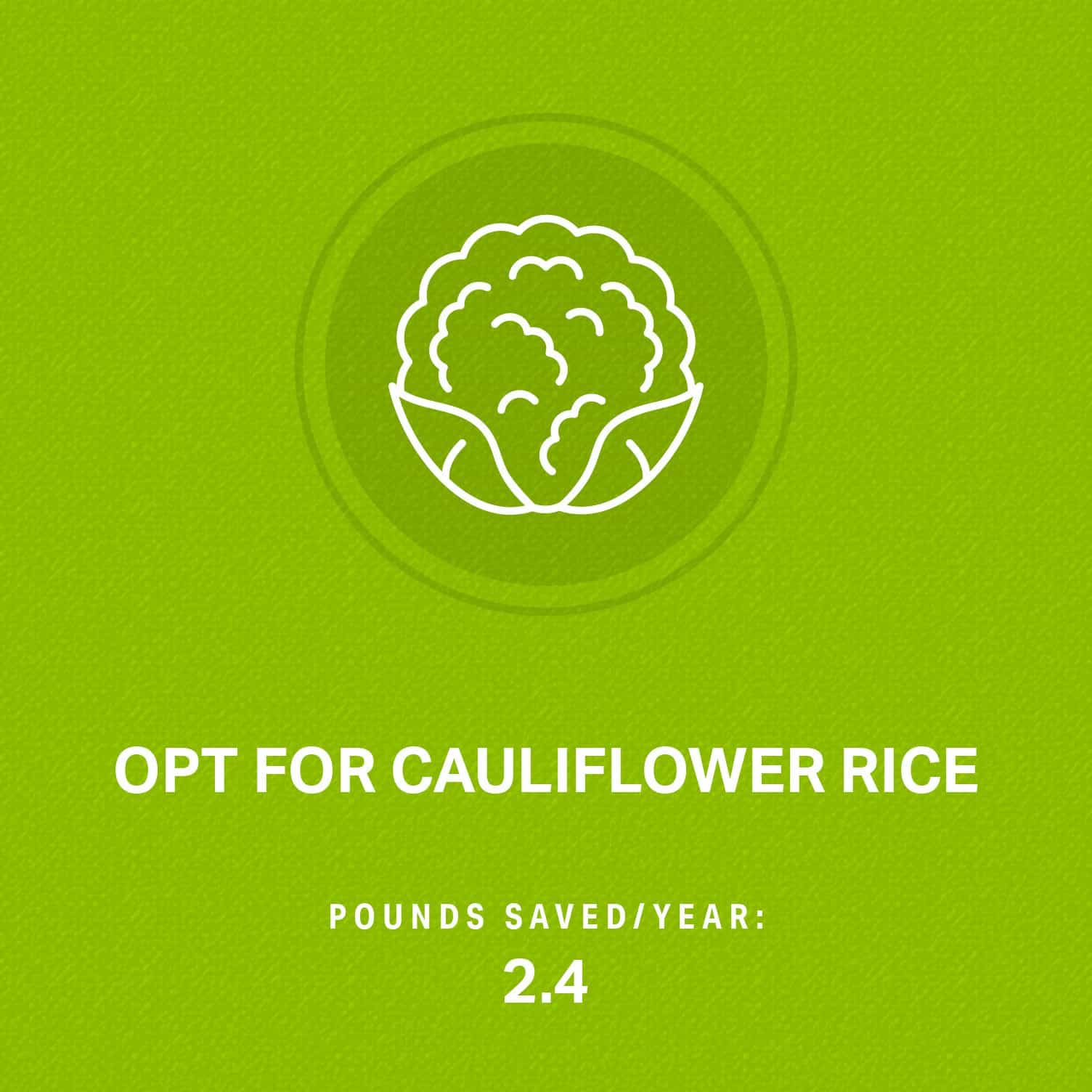
No, cauliflower rice isn’t a direct substitute for the real thing. But when prepared properly, it’s pretty darn good. And considering it’s a non-starchy vegetable, cauliflower rice is a low-carb, low-calorie way to supplement that weekly stir-fry. You’ll save about 160 calories every time you make the swap or 8,320 annually.
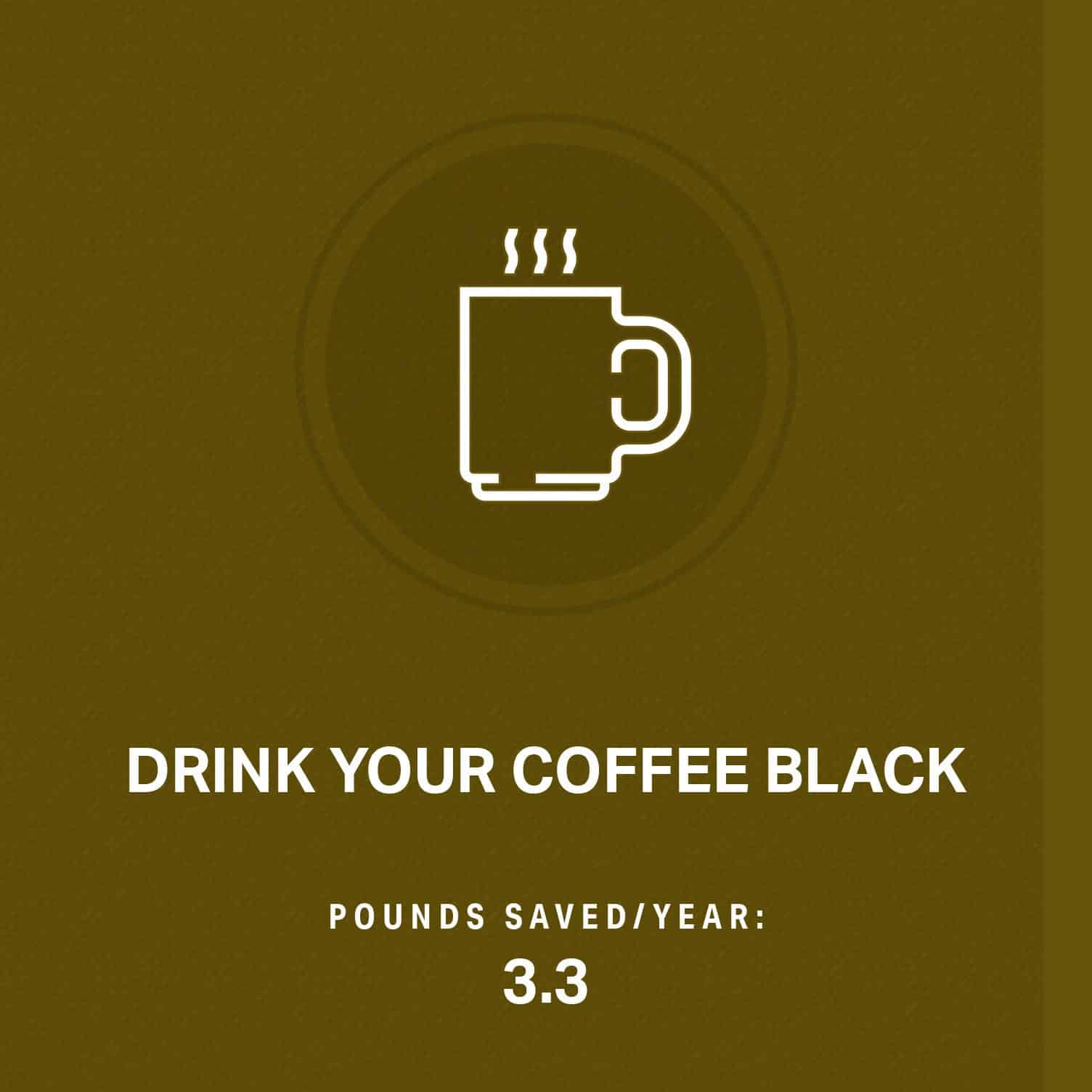
That dash of sugar in your morning coffee might taste good, but every teaspoon adds about 16 calories. You can try using a no-calorie sweetener like Stevia or just opt for a good, rich coffee, and skip the sweetener entirely. Here we’ll assume one teaspoon of sugar, and two cups per day, which is the national average. When you do the math, that’s about 11,680 calories a year!
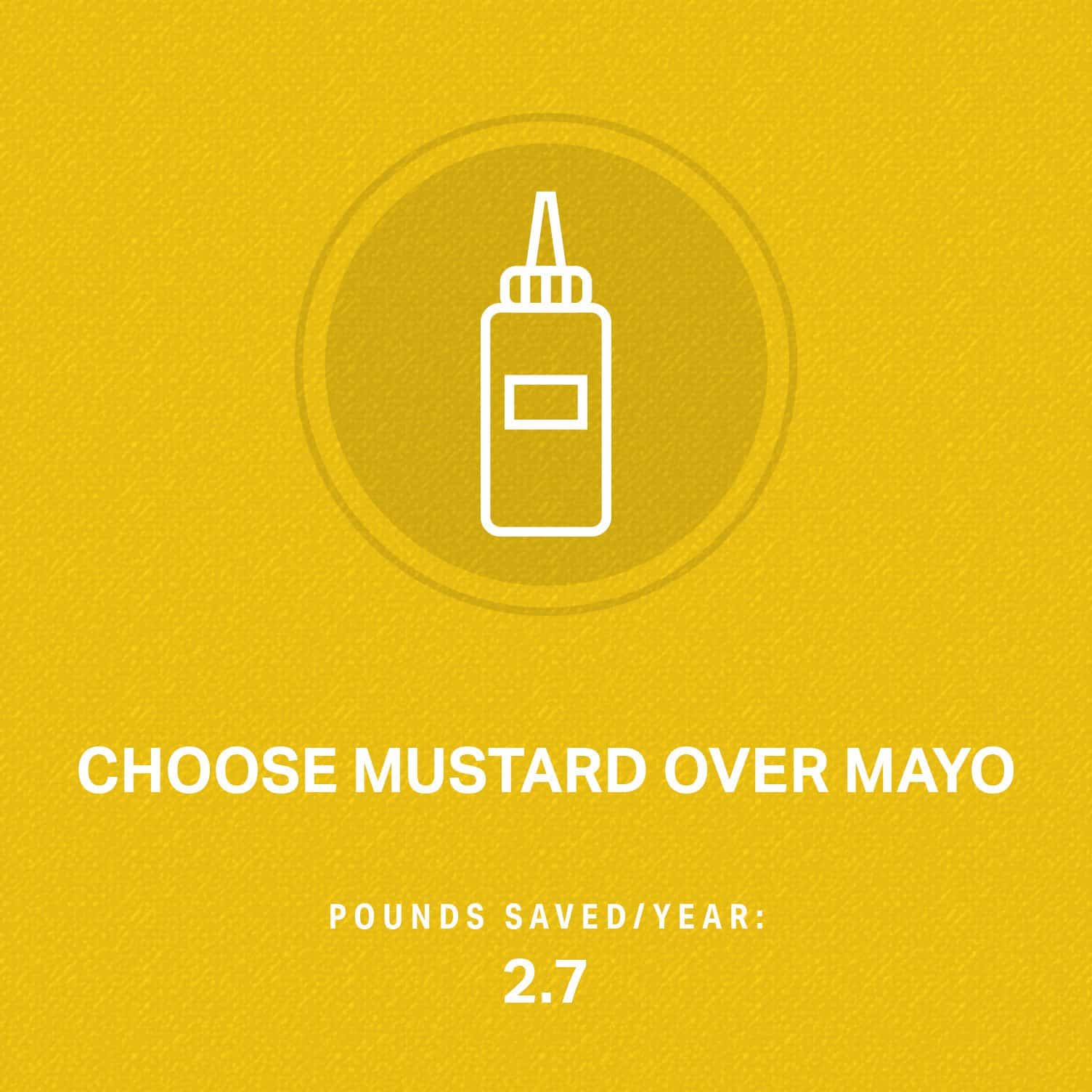
Condiments are a delicious way to spruce up just about anything. But not all condiments are created equal, so check that nutrition label before you start slathering. There are 90 calories in one tablespoon of mayonnaise, which makes zero-calorie mustard the clear champion for sandwiches, burgers and other condiment-friendly foods. Make that swap two times per week, which adds up to 9,360 calories per year and watch those calories drop.
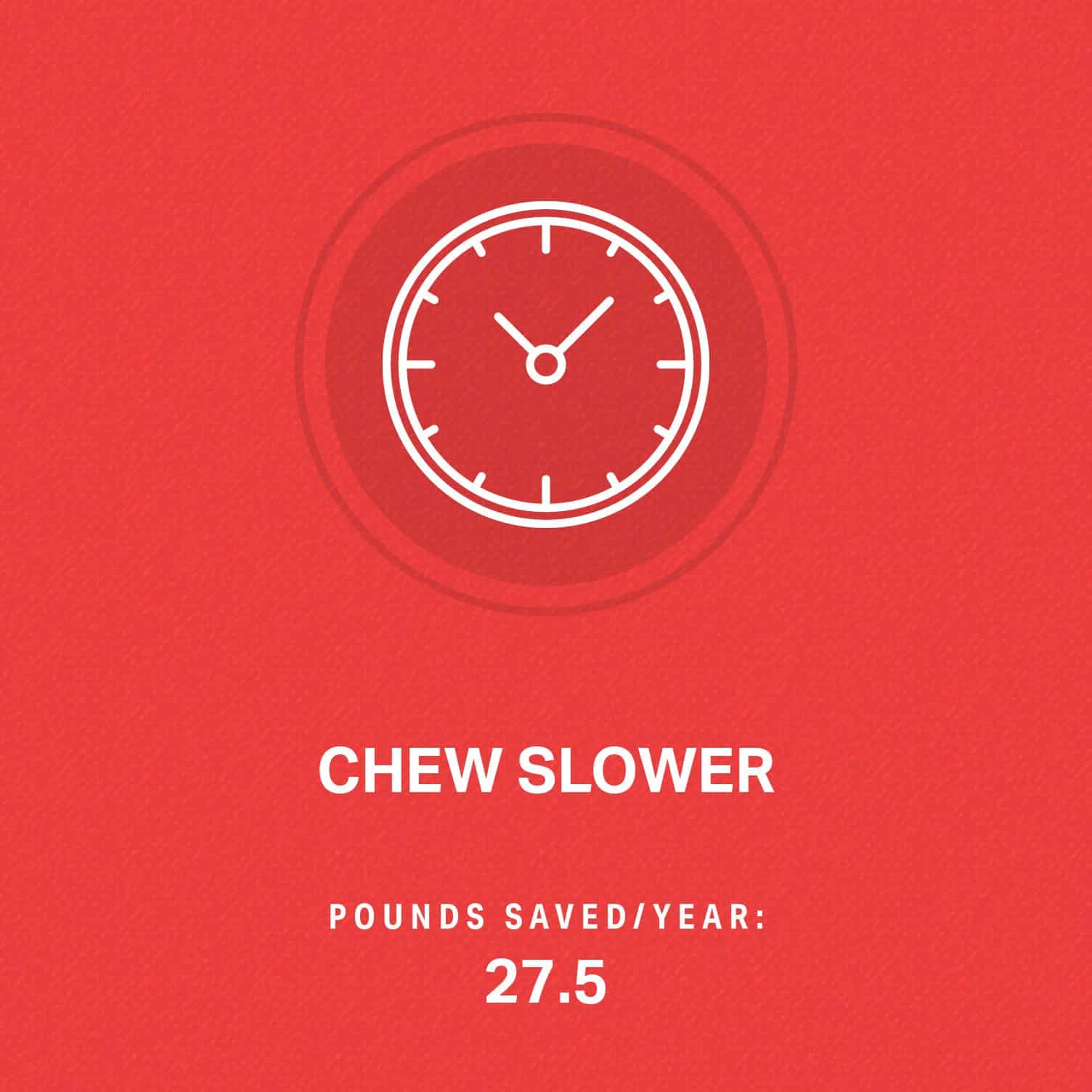
When you’re hungry, it’s tempting to shovel food into your face. But chewing more slowly — and generally being mindful of your eating — allows the body to better realize when it’s full. This can translate to less overeating, and fewer calories consumed at each meal. One study showed that normal-weight individuals reduced their calorie intake by an average of 88 calories when eating slower, as compared to the fast-eating group. Multiply that by three meals per day, 365 days a year and … that’s a ton of calories (96,360 calories to be exact).
READ MORE > 6 SMALL TWEAKS TO INCREASE YOUR CALORIE BURN ALL YEAR
